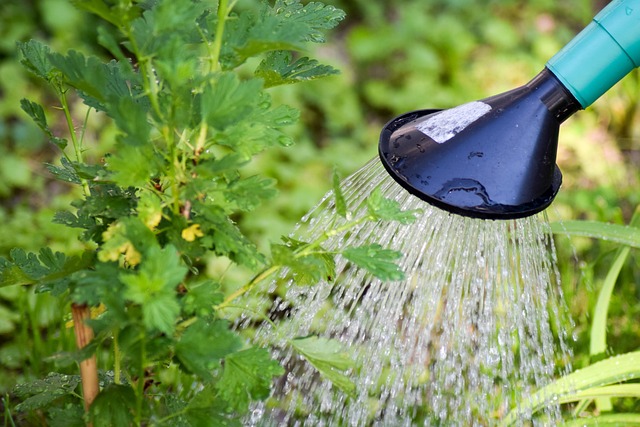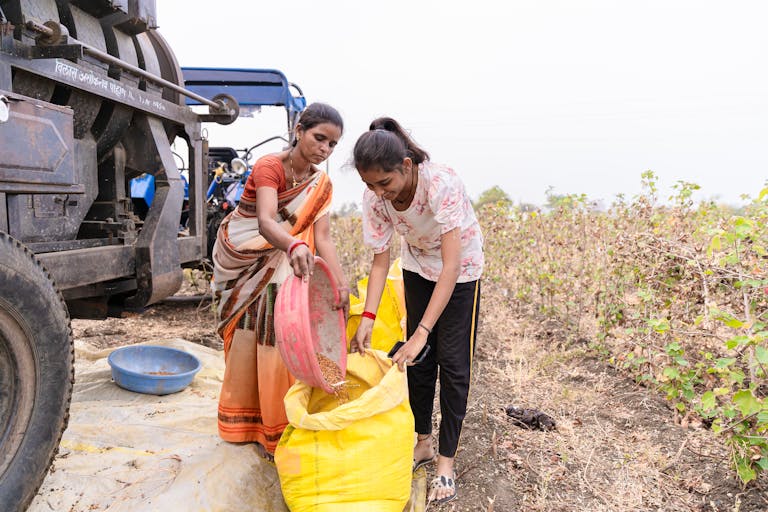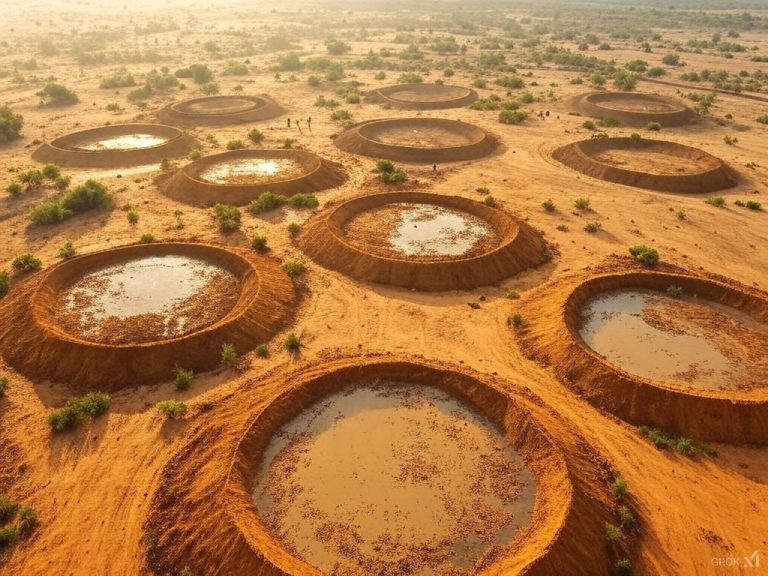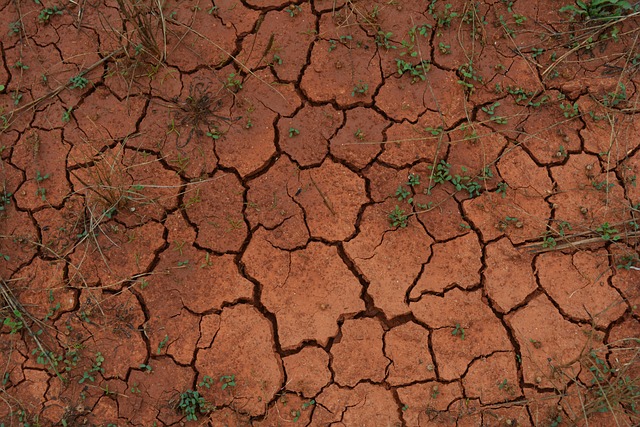
In Uganda, agriculture supports nearly 70% of the population. As Climate change deepens rainfall patterns have become unpredictable, leading to longer dry spells and reduced soil moisture. these have become a major threat to food security in the regions. areas like Karamoja, Teso, and some parts of Ankole often experience severe water shortages, leading to crop failure and livestock losses. For agriculture to remain viable in these conditions, farmers must adopt smart agriculture, innovative, and sustainable water management techniques.
What are some water management strategies?
Furthermore, from rainwater harvesting to precision irrigation, several strategies can help conserve and efficiently use available water resources. This article explores practical, cost-effective methods that farmers can implement to improve water, reduce wastage, and ensure crop survival during periods of drought.
Water management in drought-prone areas is crucial for ensuring sustainable water supply and mitigating the impacts of water scarcity. however, here are several effective water management techniques that can be applied in such regions.

How to save water during a drought?
1. Rainwater Harvesting
Rainwater harvesting involves collecting and storing rainwater for later use. This technique can be implemented in various ways:
Rooftop Rainwater Harvesting: Collecting rainwater from building rooftops and directing it into storage tanks. This method is simple and can provide a significant amount of water for household use.
Check Dams and Small Reservoirs: Constructing check dams or small reservoirs in natural drainage lines to slow down the flow of rainwater, allowing it to percolate into the ground and recharge local aquifers.
2. Efficient Irrigation Techniques.
Efficient irrigation methods help minimize water wastage and ensure that crops receive the right amount of water:
Drip Irrigation: Delivers water directly to the base of each plant, minimizing evaporation and runoff. This system is particularly effective for vegetable gardens and flower beds.

Automated Drainage Water Management (ADWM): Uses automated systems to control water flow, ensuring optimal levels for crop growth and reducing nutrient loss through tile drainage.
3. Water Conservation Practices.
Implementing water conservation practices can significantly reduce water usage:
Hydrozoning: Grouping plants with similar water needs together to target irrigation efforts more efficiently.
Mulching: Applying a layer of mulch around plants to retain soil moisture, suppress weeds, and regulate soil temperature.
Low-Flow Fixtures: Installing low-flow toilets, showerheads, and faucets to reduce water consumption in households and businesses.
4. Desalination
Desalination involves removing salts and other impurities from seawater or brackish water to produce freshwater. This technology is particularly useful in coastal areas where freshwater resources are scarce:
Reverse Osmosis: A common method of desalination that uses a semi-permeable membrane to remove salts and impurities from water.
Solar-Powered Desalination: Innovations in renewable energy are being explored to mitigate the high energy consumption associated with desalination.
5. Water Banking.
Overall water banking allows for the storage of water in underground aquifers during periods of surplus for use during droughts. This method provides financial incentives for conservation and efficient water use by enabling water rights trading.
6. Innovative Technologies.
Several innovative technologies are being developed to enhance water management in drought-prone areas:
Nanobubble Technology: Increases dissolved oxygen levels in irrigation water, promoting healthy root development and suppressing the growth of algae and pathogens.
Hydrogel Technology: Reduces water use and boosts crop resilience by retaining moisture in the soil.
7. Community Engagement and Education.
Successful implementation of water management techniques requires community involvement and education:
Training Programs: Educating residents on proper maintenance practices and the importance of keeping systems functional.
Awareness Campaigns: Raising awareness about the benefits of water conservation practices through educational campaigns.
8. Policy and Financial Support.
Governments and organizations can support water management efforts through policies and financial assistance:
Regulations and Incentives: Implementing regulations and providing incentives to encourage water-saving behaviors and the adoption of efficient technologies.
Financial Assistance: Offering financial support for the installation and maintenance of water conservation systems.
What are the mitigation strategies to reduce the impact of drought?
By combining these techniques, communities in drought-prone areas can enhance their resilience against water scarcity, improve agricultural productivity, and ensure a sustainable water supply for future generations.
Understanding the Design and Implementation of Rainwater Harvesting Systems in Various Building Types

Rainwater harvesting system, designed and implemented differently based on the type of building and its specific needs. Here’s a detailed look at how these systems are designed and implemented in residential, commercial, and industrial buildings:
Residential Buildings
Design and Implementation:
1. Collection Area: The roof is the primary collection area. Materials like metal, tile, or slate are preferred for their durability and cleanliness.
2. Gutters and Downspouts: These are essential for channeling rainwater from the roof to the storage tanks. They should be made of durable materials like PVC or metal to withstand weather conditions.
3. Pre-Storage Filtration: Debris filters are installed to prevent leaves, twigs, and other debris from entering the storage tanks. This helps maintain water quality.
4. Storage Tanks: These can be above-ground or underground. Materials like polyethylene, fiberglass, or concrete are commonly used. The size of the tank depends on the roof area and average rainfall.
5. Distribution System: A pump is often required to distribute the stored water for non-potable uses such as irrigation, toilet flushing, and laundry. Gravity-fed systems can also be used if the storage tank is elevated.
Benefits:
Reduces reliance on municipal water supply.
Lowers water bills.
Provides a backup water source during droughts.
Commercial Buildings
Design and Implementation:
1. Collection Area: Large roof areas of commercial buildings provide ample space for rainwater collection. The roofing material should be suitable for clean water collection.
2. Conveyance System: A network of gutters and downspouts directs rainwater to a central collection point. In some cases, wall-mounted systems save space.
3. Pre-storage filtration: Advanced filtration system is used to ensure the collected water is free from contaminants. This may include mesh filters, sand filters, and UV treatment.
4. Storage Tanks: Commercial systems often use large underground or indoor cisterns to store water. These tanks handle significant volumes of water and made from durable materials like concrete or fiberglass.
5. Distribution System: Pumps and piping systems distribute the harvested water for various uses, including landscape irrigation, cooling towers, and toilet flushing. Some systems integrate with the building’s plumbing to optimize water usage.
Benefits
Significant reduction in water costs for the building owner.
Enhances the building’s sustainability profile and can contribute to green building certifications like LEED.
Mitigates urban flooding by reducing stormwater runoff.
Industrial Buildings
Design and Implementation.
1. Collection Area: Industrial roofs are typically large and made of materials that facilitate clean water collection, such as metal or coated surfaces.
2. Conveyance System: Large-scale gutter systems and downspouts used to transport rainwater to storage facilities. This system, designed to handle high volumes of water has to be efficient.
3. Pre-Storage Filtration: Industrial systems often use multi-stage filtration processes, including sediment filters, carbon filters, and UV sterilization, to ensure the water meets quality standards for industrial use.
4. Storage Tanks: Industrial storage tanks are typically large and can be above-ground or underground. The materials are robust like steel or concrete to withstand harsh conditions.
5. Distribution System: Pumps and piping systems distribute the harvested water for various industrial processes, including cooling, cleaning, and manufacturing operations. Some systems integrate with existing industrial water supply networks to optimize resource use.
Benefits
Substantial cost savings on water bills for industrial operations.
Reduces the environmental impact of industrial activities by conserving water resources.
Enhances corporate sustainability goals and can improve regulatory compliance with environmental standards.
In conclusion.
In a nutshell, Effective water management is essential for sustaining agriculture in drought-prone regions by implementing techniques such as rainwater harvesting, drip irrigation, mulching, and soil conservation practices, farmers can maximize water efficiency and improve crop resilience.
Adopting these methods not only helps mitigate the impact of drought but also contributes to long-term sustainability by preserving vital water resources for future generations. As climate change continues to affect global rain patterns, investing in smart water management practices will be crucial for maintaining food security and ensuring the profitability of farming in arid and semi-arid areas.
However, Farmers and agricultural stakeholders must embrace innovation, share knowledge, and work together to develop solutions that make water-efficient farming a reality the future of agriculture depends on how well we manage our most precious resource – water.


